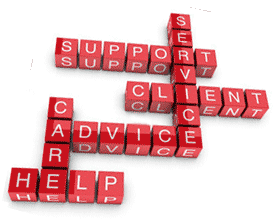Category: shareaholic
-
Tips: Managing Your Community
 I came across an interesting article about Yelp.com (a community review website) in Inc. Magazine today. They talk about how small business owners are waking up to the reality that online reviews can have a major impact on their businesses, especially in a tight economy. According to some small business owners, >10% of their new customers are being driven by sites like Yelp. That is hard to ignore!
I came across an interesting article about Yelp.com (a community review website) in Inc. Magazine today. They talk about how small business owners are waking up to the reality that online reviews can have a major impact on their businesses, especially in a tight economy. According to some small business owners, >10% of their new customers are being driven by sites like Yelp. That is hard to ignore!In the article they also give some tips on how businesses of any size can deal with negative feedback, which I thought the readers of this blog may find handy. Most of it distills down to using common sense and dealing with the situation calmly, with a positive and constructive attitude. Paraphrased and with my own views added:
1. Embrace the medium. Register for an account at the places your customers are talking about you. In most cases registering for an account is free. An account will generally allow you to receive alerts and give you a chance to respond to reviews and engage your customers.
2. Breathe. Just because you can respond doesn’t mean you should right away. Try to collect your thoughts calmly, and respond in a thoughtful constructive way. Also remember – anything you say, even in a private message, can end up on the internet.
-
Elements of Sustainable Companies
 Sequoia has a great list on the Elements of Sustainable Companies. A worthwhile read:
Sequoia has a great list on the Elements of Sustainable Companies. A worthwhile read:1. Clarity of Purpose
Summarize the company’s business on the back of a business card.2. Large Markets
Address existing markets poised for rapid growth or change. A market on the path to a $1B potential allows for error and time for real margins to develop.3. Rich Customers
Target customers who will move fast and pay a premium for a unique offering.4. Focus
Customers will only buy a simple product with a singular value proposition.5. Pain Killers
Pick the one thing that is of burning importance to the customer then delight them with a compelling solution.6. Think Differently
Constantly challenge conventional wisdom. Take the contrarian route. Create novel solutions. Outwit the competition.7. Team DNA
A company’s DNA is set in the first 90 days. All team members are the smartest or most clever in their domain. “A” level founders attract an “A” level team.8. Agility
Stealth and speed will usually help beat-out large companies.9. Frugality
Focus spending on what’s critical. Spend only on the priorities and maximize profitability.10. Inferno
Start with only a little money. It forces discipline and focus. A huge market with customers yearning for a product developed by great engineers requires very little firepower.source: SEQUOIA CAPITAL
-
Productive Paranoia = Good
Curiously enough, what got Segway into this problem was that the company was itself a kind of Segway. It was too easy for them; they were too successful raising money. If they’d had to grow the company gradually, by iterating through several versions they sold to real users, they’d have learned pretty quickly that people looked stupid riding them. Instead they had enough to work in secret. They had focus groups aplenty, I’m sure, but they didn’t have the people yelling insults out of cars. So they never realized they were zooming confidently down a blind alley.
— Paul Graham, YCombinator
My take:

– I agree, raising “too much” capital for an idea is poison. Having to do a lot with a little instills discipline, and forces one to be uber-resourceful, razor focused, and quite frankly a little paranoid 🙂 I’m extremely lucky to have mentors like David who have drilled this mantra into my head. We achieved a lot with little at both Lookery and Compete.com, and now Shareaholic.
– Iterative design is the way to go. All of us that create applications for which we can push updates and upgrades at-will at not much cost are blessed. Criminal not to take advantage of this gift.
– Focus groups? Community Managers (= everyone in the company) should be curating the feedback loop from in the field – talking to real users, asking them how we can improve our products, create the most value for them, and knock down the most roadblocks in the process — in short, make their lives easier.
Users first, always.
-
How To: Online Community Management at Compete.com

This morning I rediscovered this (previously unpublished) transcript from February 2008 in my archives.
I was Product Manager of Compete.com at the time, and it goes into how we managed and thought about our user community at Compete, a critical component that helped us surpass 1 million monthly unique visitors to Compete.com very quickly. I’ve carried much of this thinking over to Shareaholic, a tool that has been used by over 1 million people. At Shareaholic we obsess over our users, always putting our users first.
Hope you find this to be a useful read. Enjoy!
1. Who do you work for, what do they do, and what is your official job title?
Compete, Inc is a competitive web analytics company. We have a diverse sample of over two million U.S. internet users that have given us permission to aggregate and analyze all the web pages they visit and ask them questions via surveys. We believe that web analytics means analyzing what consumers do across the entire web, not just what they do within a particular site, and that marketers can use this rich information across the entire company, not just for online media planning or site design decisions.
We’ve been doing custom web analytics work for big brands such as Verizon, Chrysler and Wells Fargo for over 7 years now. Just over 13 months ago we launched compete.com. Compete.com is targeted towards the millions of people dependent upon their website/online presence to drive their business. Up until the launch of compete.com there really was no affordable, reliable and consistent source of competitive web analytics for the average marketer.
As for my own role with Compete, I’ve been with the company for just over 3 years, and my official job title is – Product Manager, Compete.com
2. Now that you have experience actually doing it, what does community management mean at Compete?
We won’t be satisfied until compete.com is the go-to industry source for the most precise competitive web analytics data available. For this to happen, we need to build a large community users that regularly use, trust and recommend Compete data – our advocates.
Generally, communities do not build themselves. They need some nurturing. I like Chris Brogan’s description of the role:
“The people gathered before you aren’t an orchestra and you are not a conductor. At best, you are a jam manager. You are the person helping bring about the experience, but with your hands as far off the overall end results as possible.”
At Compete, community management/evangelism translates to encouraging and supporting early users, enabling two-way transparent conversations about Compete, looking for and enabling people who might be interested in what we do, listening and responding to feedback (the good and the bad), setting up and managing user expectations, integrating user feedback into product roadmap decisions, being the customer’s voice within Compete, and generally being available, easy to reach, and responsive.
3. If a community manager does their job well, what happens as a result?
We hope good things 🙂 In all seriousness, in my experience users tend to feel a greater sense of ownership of the product. This leads to our users being happier, they engage more with the product, tend to talk more favorably about their experiences, and give us more (constructive) feedback in return. They become our advocates.